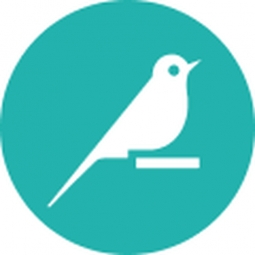下载PDF
Dataiku + La Mutuelle Générale
技术
- 分析与建模 - 预测分析
- 应用基础设施与中间件 - 数据交换与集成
适用功能
- 销售与市场营销
用例
- 补货预测
服务
- 数据科学服务
挑战
法国保险公司 La Mutuelle Générale 拥有 70 多年的市场经验,服务超过 140 万客户和 8,000 家企业客户,每年营业额超过 11 亿欧元,但在客户获取方面却面临挑战。保险行业竞争激烈,各组织都在争相争取同一类型的客户。近年来,获取新客户的成本大幅增加。为了解决这个问题,La Mutuelle Générale 寻求开发一种销售决策支持工具,以帮助他们根据潜在客户的转化可能性及其潜在价值与获取成本的对比情况,了解潜在客户并确定其优先顺序。
关于客户
La Mutuelle Générale 是一家法国保险公司,在保险市场拥有 70 多年的经验。该公司为 140 多万客户和 8,000 家企业客户提供服务,每年的营业额超过 11 亿欧元。该公司面临着保险行业的激烈竞争,近年来获取新客户的成本大幅上升。为了解决这个问题,该公司寻求开发一种销售决策支持工具,以帮助他们了解潜在客户并确定其优先次序。
解决方案
La Mutelle Générale 使用 Dataiku 开发了一套基于机器学习的系统,该系统通过为每个潜在客户分配单独的转化概率(无论该潜在客户是个人还是团体)来帮助销售人员确定工作优先级。他们首先查看现有客户的数据,特别是他们的获取成本和终身价值,以为每个潜在客户建立“相似客户”。该系统的最终结果是为销售人员提供了一种工具,通过提供两条需要考虑的信息,使他们能够更有效地确定潜在客户的优先级:转化可能性和收回获取成本的可能性。该团队还创建了一个包含这些数据的交互式地图,以便通过拜访附近的其他潜在客户,最大限度地减少拜访潜在客户的任何旅行。
运营影响
数量效益
相关案例.
Case Study
Designing an intuitive UI for effective product demand forecasting in retail
The client, a leading luxury store chain operating in over 100 countries, was facing challenges with their product demand forecasting process. The process involved a significant amount of manual work, with all sales-related data being kept in Excel tables and calculated manually. The client's merchandising and planning experts used a demand forecasting web application to make estimations of customer demand over a specific period of time. The solution calculated historical data and other analytical information to produce the most accurate predictions. However, the client wanted to improve the efficiency and effectiveness of this process, making it faster, more accurate, and less complicated for their employees. They sought to unify all processes under an intuitive UI.
Case Study
Blue Bottle Coffee Enhances Ordering Accuracy and Reduces Waste with ML-Driven Demand Forecasting
Blue Bottle Coffee (BBC), a global coffee roaster and retailer, faced a significant challenge in managing the supply of pastries across its international network of cafes. The company was using a manual ordering system, where cafe leaders estimated the required quantity of pastries based on historical sales data, current inventory, and growth projections. This system was effective when BBC had a few cafes, but with over 70 cafes worldwide, it became inefficient and inaccurate. The inaccuracies led to either under-ordering, causing sell-outs and customer dissatisfaction, or over-ordering, resulting in food waste and profit loss. The suboptimal utilization of pastries was also affecting BBC's bottom line. Therefore, BBC needed a scalable, precise, and predictive ordering solution to improve pastry ordering accuracy, reduce food waste, and meet its sustainability goals.
Case Study
Optimizing delivery of global educational programs with deeper insight into company finances
EF Education First (EF) provides language tuition around the world, often by immersing students in another culture. As student numbers fluctuate in different markets and destinations, the company must manage a dizzying array of costs relating to staffing, accommodation and educational materials, and price its offerings to maintain healthy profits while also maximizing sales. With thousands of employees influencing its budgets and financial plans, the company had difficulty ensuring a consistent approach to calculating costs and collecting data. Historically, EF had relied on spreadsheets to collect and compile financial and operational planning data from employees. As a highly decentralized organization, this was no easy task, and it was difficult to ensure a standardized approach to calculating figures and creating accurate budgets.
Case Study
Erhvervsstyrelsen: Automating financial planning processes and building budgets that everyone believes in
Erhvervsstyrelsen, the Danish Business Authority, supports businesses across Denmark. It runs 450 projects across 27 offices, employs 600 people, and is responsible for an annual budget of DKK 600 million (USD 89.8 million), as well as a number of national and EU grants. Each of these projects manages its own budget – but Erhvervsstyrelsen needs to maintain control of overall expenditure, report back to the Danish parliament, and demonstrate the value it delivers for taxpayers’ money. For this reason, it is very important for the organization to have a robust, reliable budgeting process. Erhvervsstyrelsen was formed by a merger of three former agencies, each of which had its own separate budgeting system. Since none of these systems could be adapted to meet the needs of the new organization, Erhvervsstyrelsen set up a new budgeting process based on spreadsheets. This process involved sending out spreadsheets to each project manager, and manually collecting and consolidating the data they sent back.
Case Study
Getin Noble Bank S.A. Personalizing offers to meet customers’ specific banking needs raises savings deposits by 20 percent
Getin Noble Bank S.A. experienced several years of rapid growth, at twice the pace of the rest of the Polish banking sector. As the market became saturated, customers demanded a higher level of service. To create tailored product offers to meet their needs, the bank needed a more efficient and automated method of customer segmentation. It also wanted to develop effective campaigns with repeatable and predictable results.
Case Study
SmarterData: Helping retailers redefine practices for the digital age
SmarterData, a company based in San Ramon, California, wanted to help its clients navigate the uncertainties of the digital-age retail industry. The company aimed to find new ways to provide relevant, actionable, data-driven insights into consumer behavior. As the online retail sector continues to grow, many traditional retailers find themselves struggling to keep pace. In today’s digital economy, companies of all shapes and sizes must both manage and exploit digital transformation in order to survive. SmarterData offers a range of predictive and prescriptive analytics services – including innovative mobile apps that help consumers find products, and retailers gain real-time insight into store operations.





